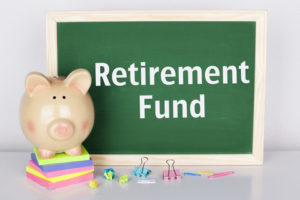 One of the most common misconceptions people have about family trusts is that they’re only for incredibly well-off families. That couldn’t be further from the truth. Keep reading for our introduction to family trusts and how they can be beneficial to you!
One of the most common misconceptions people have about family trusts is that they’re only for incredibly well-off families. That couldn’t be further from the truth. Keep reading for our introduction to family trusts and how they can be beneficial to you!
What is a family trust?
A trust fund or family trust is a legal agreement two parties in regards to assets to be passed on. A trust can contain money, stocks, real estate, and/or other assets.
There are three parties involved in establishing a trust fund:
- The settlor or trustor – this is the person or entity who establishes the trust fund with the initial contribution. This can be a company, family member, or even a family friend.
- The trustee(s) – the person, people, or entity responsible for the management and administration of the trust fund. Typically this is a financial institution or legal entity, though in some cases it may be a family member.
- The beneficiary/beneficiaries – The person or people that will receive the benefits of the trust, usually children and/or grandchildren of the person who established the trust.
While the specific roles of each party will vary between different types of trust funds, they are required in every situation. There is a huge variety in the types of trusts available, including living trusts that become effective right away, revocable trusts that allow you to keep control and ownership of your assets, and irrevocable trusts which allows you to transfer ownership and control of assets over to the trustees.
What are the benefits?
There are a number of different benefits for setting up a family fund for both the settlors and the beneficiaries. For certain types of trusts, once an asset is placed in the trust it no longer belongs to the settlor. This means that the settlor would not be required to pay income tax on money made off of those particular assets. For beneficiaries, there is a similar benefit. Since assets within the trust do not belong to them, beneficiaries would still be eligible for things such as student aid.
One of the greatest benefits may be a sense of security for the beneficiaries. As opposed to handing out a single payment that could be wasted and spent irresponsibly, a trust can be set up with certain stipulation for beneficiaries. For example, you can dictate that the beneficiaries may receive a monthly or yearly payment as long as certain conditions are met. Furthermore, you can make specific guidelines on how the money can be spent (education, investments, etc.). A family trust is a great way to ensure that your children and grandchildren receive the maximum benefit from what you’ve passed on to them.
Is it right for me?
As mentioned earlier, trust funds are not exclusively for those who are well-off. Anyone who has assets that they would like to protect for future generations would benefit from at least exploring the option of a family trust. There are limitless options for family trusts, allowing you to choose something that best meets the needs and wants of you and your family. Don’t be afraid to explore your options!
For more great advice on family trusts and estate planning, contact the team at Liu & Associates today!
 It’s no secret that the cost of a university education continues to increase every year. Planning for your child’s education now allows you to save as much as possible to give them a step up when it comes to post-secondary costs.
It’s no secret that the cost of a university education continues to increase every year. Planning for your child’s education now allows you to save as much as possible to give them a step up when it comes to post-secondary costs. Roughly half of all Canadians have some form of savings that they plan to use in retirement, not including any pension or social security that may (or may not) be available to them. While this may seem like a lot, it is not nearly enough! Many people procrastinate the process of putting away paychecks– even if you have a sizable savings account, your money could be earning you more than the modest interest offered by most banks. Keep reading for a few retirement savings tips from Liu & Associates!
Roughly half of all Canadians have some form of savings that they plan to use in retirement, not including any pension or social security that may (or may not) be available to them. While this may seem like a lot, it is not nearly enough! Many people procrastinate the process of putting away paychecks– even if you have a sizable savings account, your money could be earning you more than the modest interest offered by most banks. Keep reading for a few retirement savings tips from Liu & Associates!

 It’s never too early to save for retirement. And it used to be very simple – open a Registered Retirement Savings Plan and saved as much as you can. Maybe if you’re a lucky high-earner with no debt or other liabilities, you are able to contribute to your retirement with investments beyond an RRSP. But, for the average earner, RRSPs are the way to go. Then in 2009 Tax Free Savings Accounts come along and now low and mid-level earners have options. Read on to find out the pros and cons of using RRSPs and TFSAs to
It’s never too early to save for retirement. And it used to be very simple – open a Registered Retirement Savings Plan and saved as much as you can. Maybe if you’re a lucky high-earner with no debt or other liabilities, you are able to contribute to your retirement with investments beyond an RRSP. But, for the average earner, RRSPs are the way to go. Then in 2009 Tax Free Savings Accounts come along and now low and mid-level earners have options. Read on to find out the pros and cons of using RRSPs and TFSAs to 